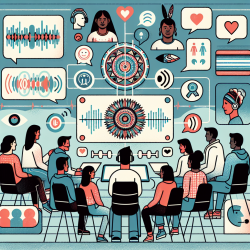Psychotherapy has always been a complex interplay of understanding, interpreting, and transforming an individual's mental and emotional states. The recent research article "Transprocessing: A Proposed Neurobiological Mechanism of Psychotherapeutic Processing" by Novac and Bota (2014) delves into the neurobiological underpinnings of this transformative process, introducing the concept of transprocessing. Here, we explore how practitioners can enhance their therapeutic skills by integrating the insights from this research.
Understanding Transprocessing
Transprocessing combines the principles of transduction and processing, proposing that the brain processes multimodal memories and creates reparative solutions during psychotherapy. This mechanism involves deconstructing engrained response patterns and reintegrating emotional and cognitive elements, leading to long-term adaptive changes.
Key Phases of Transprocessing
The research outlines three crucial phases of transprocessing that practitioners can leverage:
- Evaluation: During this phase, new information intersects with pre-existing implicit memories and proto-emotions, allowing for a conscious comparison and evaluation.
- Acquisition and Self-Reference: This phase involves the formation of new multimodal memories through language and interactive use, leading to new insights and self-awareness.
- Reconsolidation: New experiences are reworked and integrated into the existing memory framework, leading to stable behavioral and personality changes.
Implementing Transprocessing in Practice
To integrate transprocessing into therapeutic practice, consider the following steps:
- Encourage Multimodal Memory Formation: Use language, visualization, and interactive techniques to create rich, multimodal memories that can override maladaptive patterns.
- Facilitate Emotional-Cognitive Integration: Promote activities that engage both emotional and cognitive processing, such as mindfulness, expressive writing, and guided imagery.
- Focus on Self-Reference: Help clients develop a strong sense of self-awareness and ownership of their experiences through reflective exercises and self-monitoring techniques.
Further Research and Application
While the concept of transprocessing provides a robust framework for understanding brain processing in psychotherapy, ongoing research is essential to refine and expand its applications. Practitioners are encouraged to stay updated with the latest findings and explore new therapeutic techniques that align with this neurobiological model.To read the original research paper, please follow this link:
Transprocessing: A Proposed Neurobiological Mechanism of Psychotherapeutic Processing.










